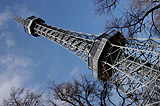Velvet Revolution
Nov 17, 08:02 Filed under history
In November and December, Czechs commemorate the Velvet Revolution. It refers to a bloodless revolution in Czechoslovakia that saw the overthrow of the communist regime in 1989, and brought back democracy to Czechs after fifty years of lack of freedom – after Nazi occupation and communist rule.
Velvet Revolution is very special since revolutions usually go hand in hand with fighting. Because of its peacefulness it was named “Velvet” as the revolution was as smooth as this material.
It started off on November 17, 1989, as a peaceful officially-sanctioned march in Prague to commemorate Czech student Jan Opletal, who died at the hands of the country’s Nazi occupiers 50 years ago, in 1939. Students, however, soon started to scan slogans against the communist regime.
It is said that about 15 000 students had joined the demonstration. They walked to the grave of Jan Opletal and – after the official end – continued from the Czech National Cemetery at Vysehrad to Wenceslas Square calling for democratic reforms. They never made it there, however.
At about 7:30 pm, when they were halfway in their march, at Narodni Street, were the students stopped by a cordon of police. After few minutes, when the students offered flowers to the police shouting rhythmically: “We have bare hands” and singing songs, the police suddenly began to beat the young demonstrators with night sticks. Before that, the police managed to block all escape routes. Nearly 200 people were injured. One student was reported beaten to dead. Although this was later proved false, is served well for mass student’s support among general public.
 November 17 was the impulse for great changes to come. The six-week period between November 17 and December 29, 1989, that is the time period called the Velvet revolution. On December 29, Vaclav Havel, a dissident and a play writer well known for his anti-communist opinions, became the President of the Czechoslovakia. Soon enough, in June 1990, the first democratic elections since 1946 were held in Czechoslovakia.
November 17 was the impulse for great changes to come. The six-week period between November 17 and December 29, 1989, that is the time period called the Velvet revolution. On December 29, Vaclav Havel, a dissident and a play writer well known for his anti-communist opinions, became the President of the Czechoslovakia. Soon enough, in June 1990, the first democratic elections since 1946 were held in Czechoslovakia.
Visit the key places where Czech history was in making – Vysehrad Cemetery, Narodni Street and Wenceslas Square, where students were heading. At Narodni Street, best reached by trams 6, 9, 18, 22, 23 – station Narodni divadlo, there is even a memorial to November 17. I am sure there will be candles there on this day and few days after November 17 too.
President of the Czech Republic always lays flowers there on this special day. You may meet him there!!
It is in a passage through on the right side if you walk from the National Theater towards the Wenceslas Square. There is portrayed a hand on the wall showing a “V” with its finger, which stands for Victory. It was a favorite gesture of demonstrators during Velvet Revolution meaning we will succeed.
What is very interesting is that in 1989, November 17 fell on Friday. This year it is Friday too!
 But why both events took place on November 17 and not on some other day? Well, both evens are connected. And I will tell you how.
But why both events took place on November 17 and not on some other day? Well, both evens are connected. And I will tell you how. 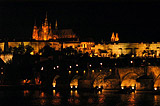
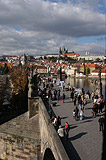
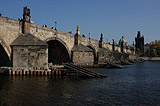
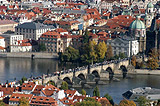
 Maybe you have noticed young boys in tuxedos and white gloves walking in the streets of Prague at the evening. They are no servants or waiters but participants of dancing lessons. At those dancing lessons, students have to be dressed formal, which means boys in tuxedos, girls in a night dress and court shoes.
Maybe you have noticed young boys in tuxedos and white gloves walking in the streets of Prague at the evening. They are no servants or waiters but participants of dancing lessons. At those dancing lessons, students have to be dressed formal, which means boys in tuxedos, girls in a night dress and court shoes.  And why so many students enroll? First of all, it has a long tradition in the Czech Republic. Second of all, it is a great social event – students usually go there as a group of friends and afterwards they go together to a bar. And lastly, classical dances come handy at proms. If you can’t dance at prom, you look bad.
And why so many students enroll? First of all, it has a long tradition in the Czech Republic. Second of all, it is a great social event – students usually go there as a group of friends and afterwards they go together to a bar. And lastly, classical dances come handy at proms. If you can’t dance at prom, you look bad. 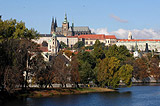
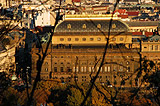
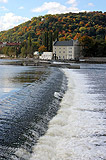
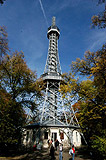
 Well, actually, Czech “Halloween” is not celebrated on October 31st but November 2nd. Another difference is that Czech kids do not get dressed in costumes on that particular night. And also nobody is going door-to-door collecting sweets. Yes, I know that now you may thing that I am crazy, because Halloween without costumes and trick-or-treating is no Halloween! But what Czechs celebrate on November 2nd is similar to Halloween and I am going to tell you how!
Well, actually, Czech “Halloween” is not celebrated on October 31st but November 2nd. Another difference is that Czech kids do not get dressed in costumes on that particular night. And also nobody is going door-to-door collecting sweets. Yes, I know that now you may thing that I am crazy, because Halloween without costumes and trick-or-treating is no Halloween! But what Czechs celebrate on November 2nd is similar to Halloween and I am going to tell you how!  Halloween originated among the Celts as a pagan harvest festival. Celts used to live not only in England and Ireland, as many think, but in most of Europe (around 500 BC). Celts, according to many evidence, lived in a region that is now the Czech Republic as well.
Halloween originated among the Celts as a pagan harvest festival. Celts used to live not only in England and Ireland, as many think, but in most of Europe (around 500 BC). Celts, according to many evidence, lived in a region that is now the Czech Republic as well.  As you probably know, on the 28th of October Czechs celebrate a
As you probably know, on the 28th of October Czechs celebrate a 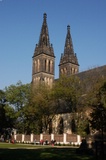
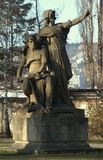
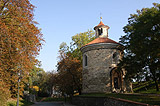
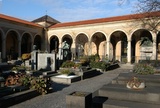
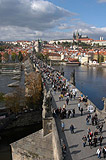
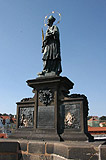
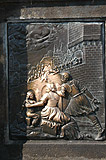
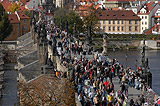
 Does it sound crazy to you? A museum for a person that never ever existed? Well, nothing is impossible
Does it sound crazy to you? A museum for a person that never ever existed? Well, nothing is impossible  Jara Cimrman is really only legendary person. He was created – over a bottle of vodka, they say – by Ladislav Smoljak, Jiri Sebanek and Oscar winning director Zdenek Sverak (1996 for film Kolja). They created a great myth about the perfect Czech. Immediately, Cimrman gained enormous popularity.
Jara Cimrman is really only legendary person. He was created – over a bottle of vodka, they say – by Ladislav Smoljak, Jiri Sebanek and Oscar winning director Zdenek Sverak (1996 for film Kolja). They created a great myth about the perfect Czech. Immediately, Cimrman gained enormous popularity. 